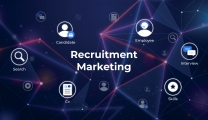What is diversity hiring?
Diversity hiring is a process where recruiters actively seek out applicants from a variety of backgrounds and ethnicities. Here, you take all the necessary steps to ensure your talent acquisition process is more inclusive toward a diverse set of candidates.
Workplace diversity can be related to numerous factors like age brackets, religion, disabilities, personalities, skill sets, experiences, and even knowledge.
The primary goal of diversified talent acquisition is to identify and remove biases from every step of the recruiting cycle.
While you level the playing field for candidates competing for the job role, you create room to bring a platter of fresh perspectives to the table while also boosting the employer brand of the company.
6 reasons diversity hiring is important
1. Allows you to embrace the power of differences
Each individual comes with a unique set of skills, knowledge, and life experiences.
By embracing diversity, you create an environment where various viewpoints intersect, leading to richer discussions, broader problem-solving approaches, and, ultimately, better outcomes.

Bringing together various perspectives can mean challenging your existing work practices, unearthing hidden opportunities, fostering a company culture of continuous learning, and much more. The possibilities are truly endless.
2. Lets businesses reflect on their customer base
In today’s globalized world, businesses operate in diverse markets with customers from various underrepresented groups. A diverse workforce enables companies to understand and connect with their target audience on a deeper level.
Mirroring the diversity of their customers enables businesses to gain valuable insights into their needs, preferences, and cultural outlook.
This understanding becomes a strategic advantage, allowing your clients to communicate effectively and tailor their products or services specifically to cater to a broader audience. This helps them drive business growth.
3. Builds trust and inclusion
When employees see individuals from different backgrounds, demographics, and identities thriving within an organization, a sense of trust and belonging starts to take root.
Through the proactive encouragement of diverse recruitment, you can showcase your dedication to fostering an inclusive environment. This helps establish a comfortable space where employees are appreciated, revered, and empowered to express their true selves within the workplace.
It fosters a positive work environment, boosts employee morale, and enhances overall job satisfaction.
4. Enhances problem-solving and decision-making
Teams with people who think alike tend to have similar ways of approaching problems, closing doors on other possible ways leading to a better solution.
In contrast, diverse teams bring together a wealth of perspectives, knowledge, and problem-solving styles.
It’s like having a toolbox filled with various tools to tackle any challenge that comes your way.
5. Strengthens your client’s employer brand
In today’s competitive job market, the best talent is always on the lookout for employers who prioritize diversity and inclusion.
Being an active player in the DEI community, your client company can position itself as an attractive destination for skilled professionals from all walks of life.
A strong employer brand built on inclusivity not only helps attract diverse and bottom-line groups but also improves employee retention and becomes a magnet for potential customers as well as business partners.
6. Fosters social responsibility
Inclusive recruitment goes beyond business benefits; it is a way to contribute to a fairer and more equitable society.
Purposefully reaching out to diverse candidates and ensuring equal opportunities helps dismantle societal barriers and fosters societal progress.
It’s about using your position as a recruiter to champion equality and create a positive impact on the world around you. And let’s not forget the long-run brownie points you earn in the process.
3 major obstacles to DEI initiatives (+ solutions to counter them)
Obstacle 1: Diversity fatigue
Diversity fatigue can manifest itself in various ways, mainly depending on your unique D&I journey. Here are a few examples of those forms:
Employees can believe that getting diverse candidates “lowers the bar.”
It frequently shows up as sentiments of threat. Most workers may see diversity initiatives as something they are “on the wrong side of” or intended to exclude them.
Such fatigue might also manifest in the TA teams who believe diversity sourcing results from a talent shortage. After all, they’re being pushed to find a diverse applicant pool in the face of what amounts to a “supply-and-demand dilemma.”
A considerable amount of emotional labor is expended in DEI campaigns by the team that is firmly committed to the cause.
Solutions for diversity fatigue
Ditch the assumptions
You need to take a step forward and preach the fact that diversity recruiting does not “lower the bar” and that you do not intend to exclude or stigmatize non-minority talent.
Hold events to educate the existing workforce about your inclusive hiring efforts to muster up equal cooperation from their end.
Realistic goals take you a long way
Setting unrealistic goals will only serve to demoralize everyone involved and turn the crowds against the cause.
Instead, start small, tick off the initial boxes, and expand the goals at a slow and steady pace.
Obstacle 2: Vague DEI strategies
Diving straight into diversity recruiting without doing the homework is a sheer waste of time and effort.
While inclusivity might not be the hardest feat to achieve, you should always remember the obvious complications of the procedure that are too significant to be ignored.
And these complexities call for effective planning to design a diversity hiring strategy that serves the unique DEI (Diversity, Equity, Inclusion) goals of your clients.
- A vague strategy is as good as no strategy.
- Solutions for vague DEI strategies
- Examine the current diversity situation in the workforce
Did the organization devote itself to diversity hiring before? What is the current ratio of employees coming from diverse backgrounds in the workforce?
Digging out answers to these questions can help you chalk out a foundational base to work upon, identifying the key areas that need to be addressed.
Consult some industry experts
If your client is just starting out with DEI initiatives, the top management is less likely to be aware of the know-how of the procedure. That is exactly where experts can help.
Seeking help from people who have achieved success in DEI initiatives can help you design an effective roadmap for the entire hiring process, simplifying the steps to be followed, including the do’s and don’t’s.

Obstacle 3: Unconscious bias
This last obstacle in your way to forming and sustaining diverse teams is the most dangerous.
Research demonstrates that even self-proclaimed diversity advocates can often exhibit subconscious bias while reviewing resumes.
In a survey conducted by Deloitte, over 60% of the respondents claimed to have witnessed or been victims of both conscious and unconscious bias.
It’s also worth recalling the 2004 MIT and the University of Chicago research on perceived race in hiring, in which 5,000 fictional applications were distributed to 1,250 employers: “White-sounding” names (Emily and Greg) received 50% more calls than “Black-sounding” ones (Lakisha and Jamal).
These shocking stats can’t be ignored, and we certainly can’t deny the power deeply embedded biases hold.
Solutions for unconscious bias:
- Learn about unconscious biases and understand where yours lie. (This will need curiosity, honesty, and vulnerability.)
- Harvard’s Project Implicit is a wonderful resource that provides a series of Implicit Association Tests to bring the unconscious into the conscious.
In addition, Facebook provides “Managing unconscious prejudice” training, consisting of a series of video sessions that tackle a distinct bias.
You need to share these tools with your colleagues, hiring managers, the human resources team, top management, and anybody else who can benefit from them. The key is to make a point of emphasizing the significance of self-awareness with due diligence.
You may also assist in organizing unconscious bias training for your own recruiters and your client’s employees so that all teams can eventually engage in more inclusive sourcing, recruiting, and assessment procedures.












Replies to This Discussion